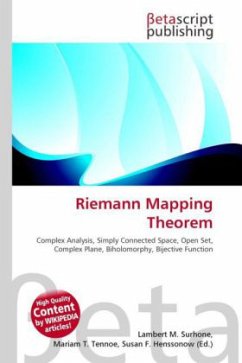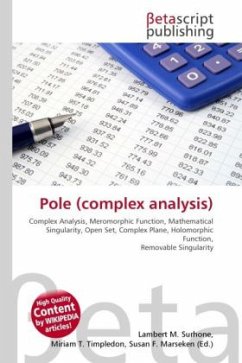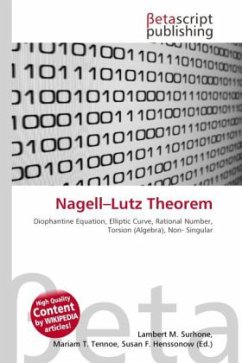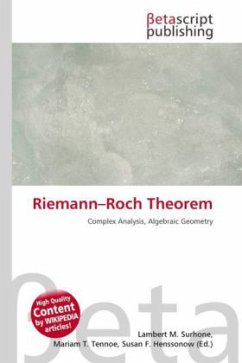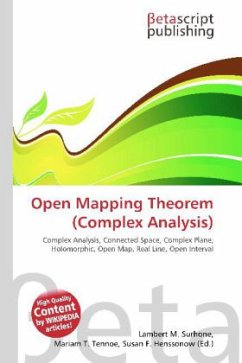
Open Mapping Theorem (Complex Analysis)
Versandkostenfrei!
Versandfertig in 6-10 Tagen
23,99 €
inkl. MwSt.

PAYBACK Punkte
12 °P sammeln!
Please note that the content of this book primarily consists of articles available from Wikipedia or other free sources online. In complex analysis, the open mapping theorem states that if U is a connected open subset of the complex plane C and f : U C is a non-constant holomorphic function, then f is an open map (i.e. it sends open subsets of U to open subsets of C). The open mapping theorem points to the sharp difference between holomorphy and real-differentiability. On the real line, for example, the differentiable function f(x) = x2 is not an open map, as the image of the open interval ( 1...
Please note that the content of this book primarily consists of articles available from Wikipedia or other free sources online. In complex analysis, the open mapping theorem states that if U is a connected open subset of the complex plane C and f : U C is a non-constant holomorphic function, then f is an open map (i.e. it sends open subsets of U to open subsets of C). The open mapping theorem points to the sharp difference between holomorphy and real-differentiability. On the real line, for example, the differentiable function f(x) = x2 is not an open map, as the image of the open interval ( 1,1) is the half-open interval [0,1). The theorem for example implies that a non-constant holomorphic function cannot map an open disk onto a portion of any real line embedded in the complex plane.





